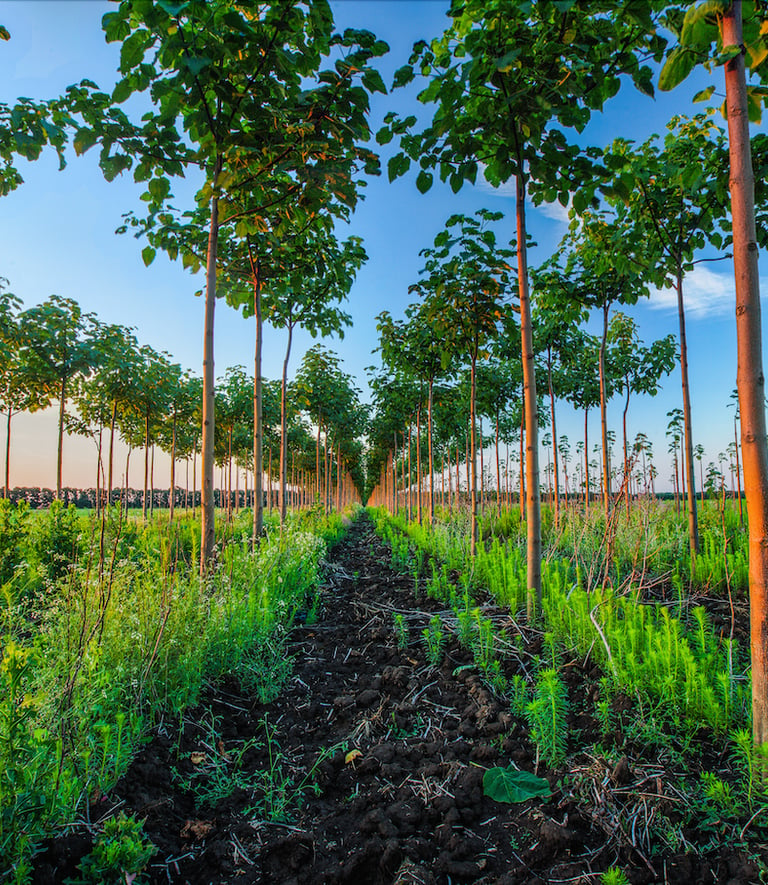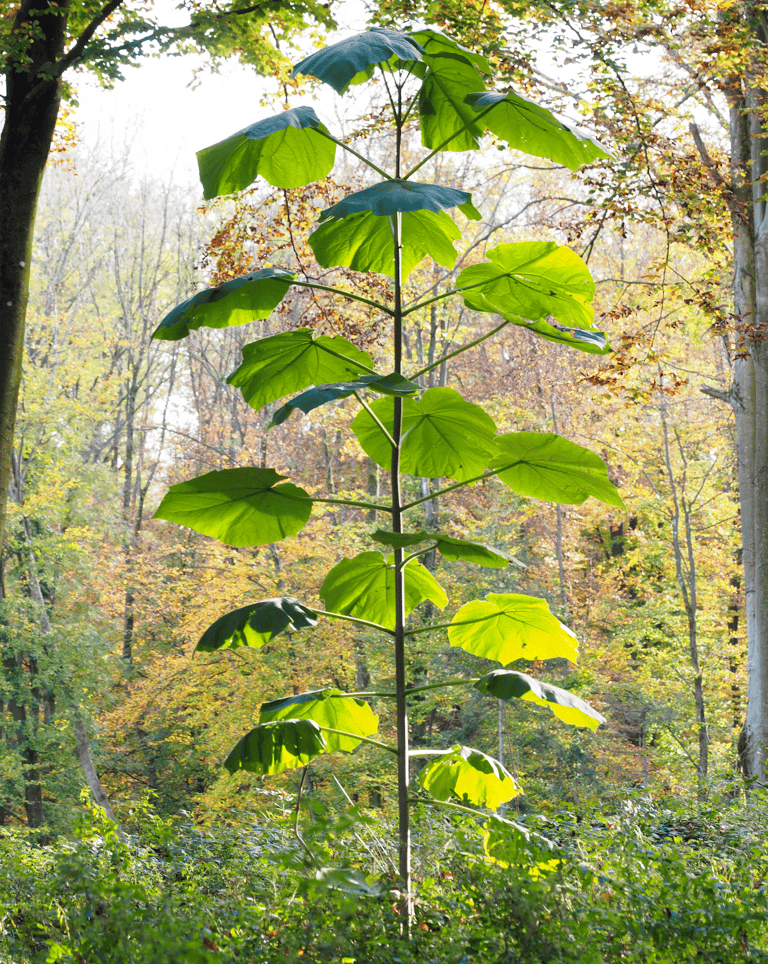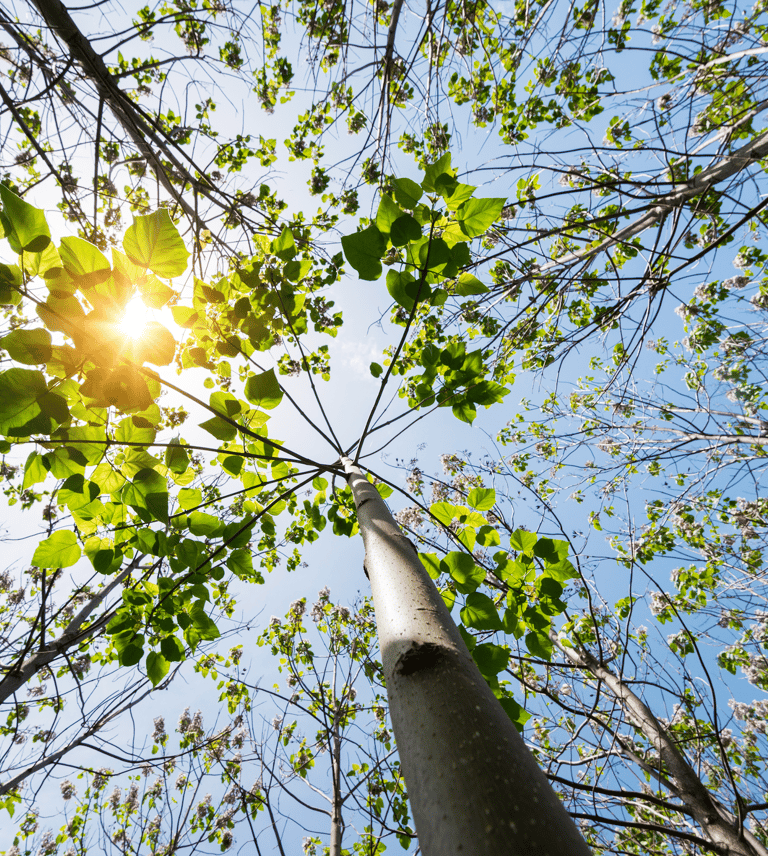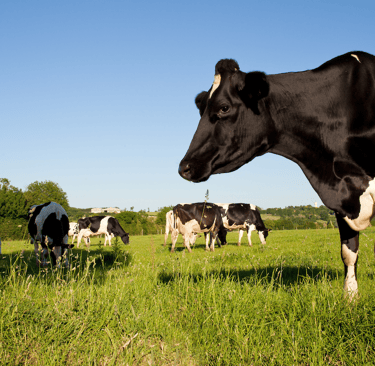Our vision
Ikiwood's primary mission is to plant trees. We believe that Paulownia is one of the most suitable species, as it combines a number of advantages. We plan to plant both on agricultural wasteland and, above all, in agroforestry. Planting trees on agricultural plots increases resilience in the fields: they regulate temperatures, infiltrate the plots and provide organic matter and bio-diversity. Non-invasive sterile hybrids, our trees have the advantage of establishing and providing an agroforestry system in less than 5 years. They also play a social role, providing farmers with additional income. Ikiwood's ambition is to create a virtuous plantation model, never competing with forests, our endemic species or food crops to produce a renewable and affordable resource while fixing a maximum of CO2 from the atmosphere. Our vision is closely linked to the paulownia's extraordinary capacities; here's a glimpse:


Paulownia, a Super-Tree
It's considered the world's fastest-growing tree; in the right conditions, it grows by over 3 metres every year, reaching a diameter of 40cm in 7 years; it creates more biomass than most plant species, and with little water; for example, it's almost twice as water-efficient as poplar (in litres/Kg of biomass)*; its leaves, which can reach 1m in diameter, are real solar collectors, optimizing photosynthesis and saving water. Like a phoenix, it regenerates when damaged and is capable of spontaneously regrowing up to 5 times after a clear cut. In its subsequent cycle, it will regrow even faster, benefiting from an established root system.


*Thevs et Al 2021 : Water Productivity of Poplar and Paulownia on Two Sites in Kyrgyzstan, Central Asia
One of the most effective ways of fixing C02
For a number of years now, there has been aggressive communication about the ability of paulownias to capture CO2; we have redone the calculations to avoid any greenwashing:
We consider a mature paulownia tree (8 years old) of a dozen meters and 40cm in diameter at the base; We have approximately 1m3 of trunk, 0.2m3 of branches and 0.2M3 of roots.
Biomass per tree: 1.4 m³ per tree.
Biomass mass per tree: 1.4 m³/tree×280 kg/m³ = 392 kg dry biomass per tree.
Carbon stored per tree: Approximately 50% of the dry weight of the biomass is carbon, so 392 kg×0.5 = 196 kg.
Conversion to CO2 stored per tree: Stored carbon is converted to CO2 by multiplying its value by 3.67 (the ratio between the molecular weights of CO2 and C), so 196 kg ×3.67 = approx. 719.32 kg of CO2 per tree, or 89kg per tree per year on an 8-year cycle.
It is generally accepted that a tree absorbs between 10kg and 40kg of CO2 per year, depending on its species and planting conditions. The paulownia is therefore at least 2 times more efficient than any other tree at fixing CO2.




Paulownia has it all
Paulownia leaves are edible and rich in protein (approx. 20% of dry weight, as much as alfalfa). While not a delicacy for livestock, they will decompose and provide the soil with a nutrient-rich organic fertilizer (NPK)*. What's more, the quantity of leaves produced by an 8-year-old paulownia is unrivalled (over 100kg per tree per year).
Paulownia flowers are also highly attractive for ornamental purposes, and are melliferous; several studies confirm a honey yield of around 750kg/ha.
Studies suggest the possibility of using paulownia for phytoremediation, thanks to its ability to absorb heavy metals and its tolerance of lead-contaminated soils**.
*Woźniak et al 2018 : Microbial diversity of Paulownia spp. leaves – A new source of green manure
**Du et al 2023 : The Potential of Paulownia fortunei L. for the Phytoremediation of Pb
Contacts
Keep up to date with our developments and new products
Follow us on
